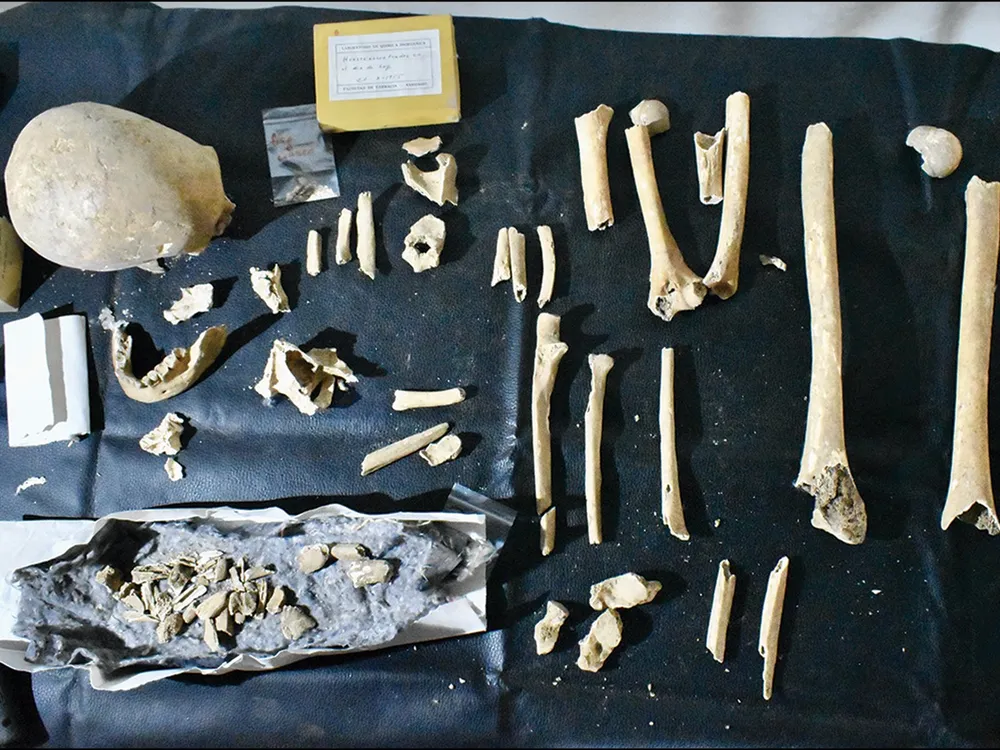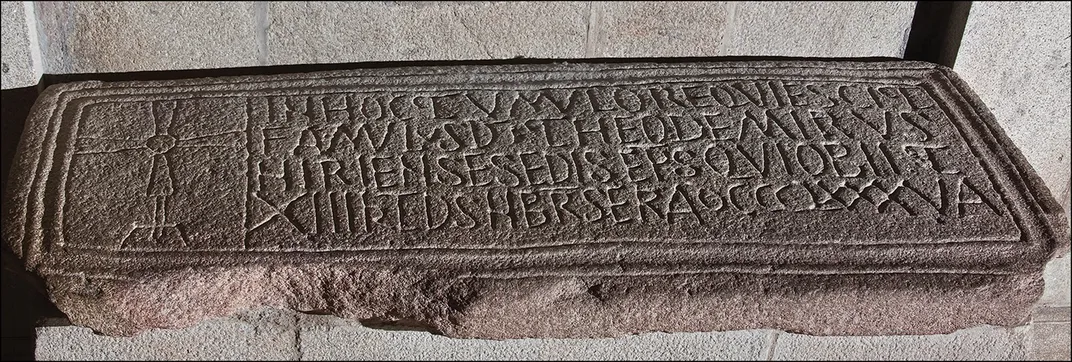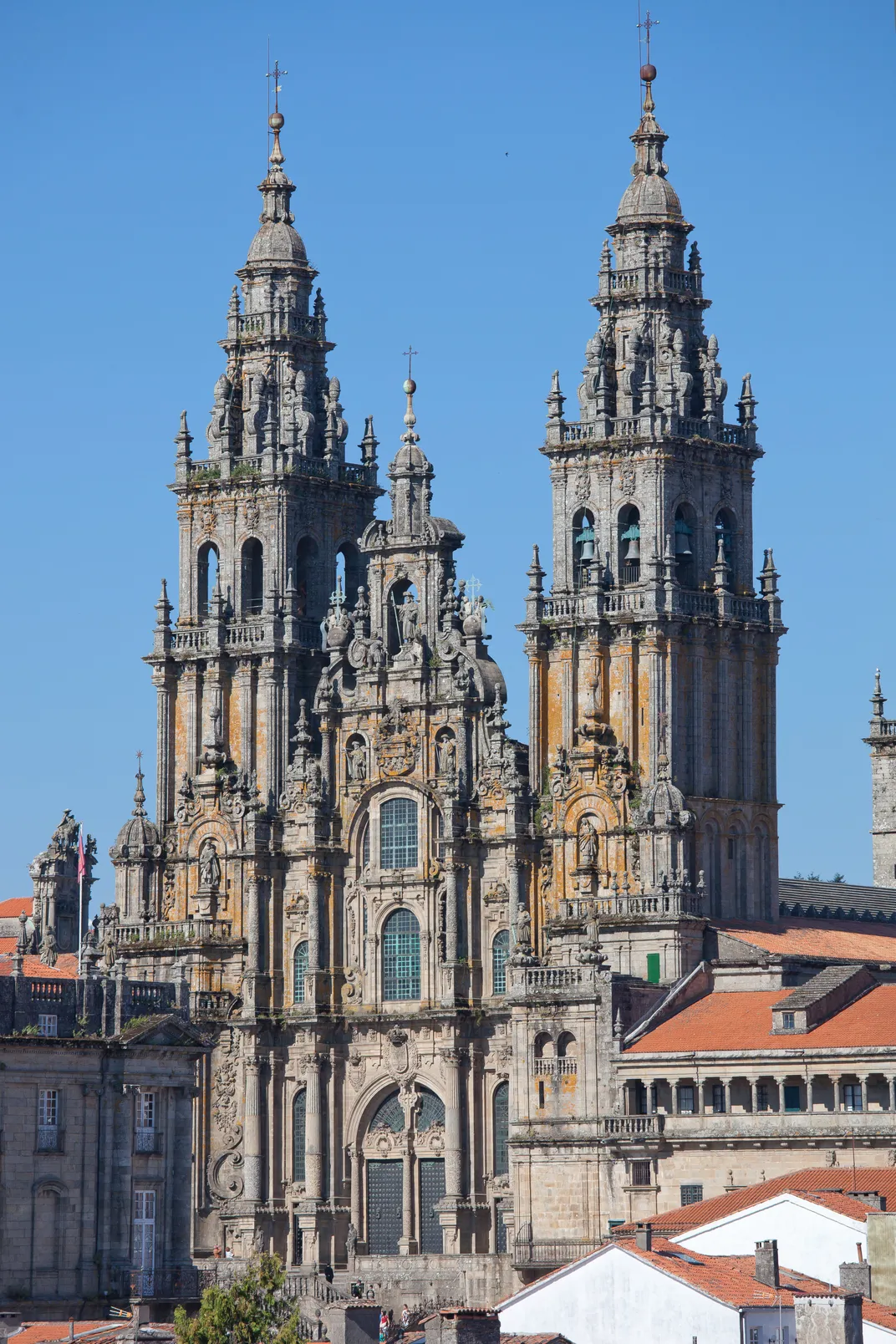Archaeologists May Have Identified the Bones of a Celebrated Ninth-Century Bishop in Spain
Bishop Teodomiro was a central figure in the creation of the Camino de Santiago pilgrimage

Researchers think they’ve finally identified a skeleton found in northwest Spain nearly 70 years ago. The bones belonged to Bishop Teodomiro of Iria Flavia, a ninth-century figure who played a significant role in the establishment of the Camino de Santiago, according to a study published this month in the journal Antiquity.
The Camino is a network of roads stretching across Europe. The famous Christian pilgrimage concludes at the shrine of St. James the Apostle, which is located at the Cathedral of Santiago de Compostela in Galicia, Spain. For centuries, “countless footsore pilgrims” have walked these roads to arrive at the cathedral, as the Guardian’s Sam Jones writes. But without one man, the pilgrimage might not exist.
“After St. James the Apostle, Bishop Teodomiro of Iria Flavia is the most important figure associated with the pilgrimage to Santiago de Compostela,” write the researchers. “He supposedly discovered the apostolic tomb after a divine revelation between 820 and 830 C.E.”

St. James died in Jerusalem between 41 and 44 C.E. As the story goes, two of his disciples traveled to northwest Spain to bury his remains. Much later, in the ninth century, a hermit named Pelayo is said to have told Teodomiro about a strange shower of bright stars. When the bishop investigated the site, he found the tomb that held James’ remains.
These events prompted Alfonso II and his court to travel from Spain’s Asturias region to the site of the discovery. Their journey was the first Camino de Santiago pilgrimage—and their route became known as the “Primitive Way.” The king directed that a church be built around St. James’ remains.
“Despite the story’s significance, Bishop Teodomiro’s … existence was questioned until the latter half of the 20th century,” according to a statement from Germany’s Max Planck Institute for Geoanthropology, which collaborated on the study.
In 1955, archaeologists at the site found a tomb marked with Teodomiro’s name. They initially concluded that the bones belonged to an elderly male, writes Reuters. However, a few decades later, other researchers posited that they belonged to a woman.

To conduct the new study, researchers examined the bones using numerous advanced techniques, including “osteoarchaeology, radiocarbon dating, stable isotope and ancient DNA analyses,” per the study.
The team determined the bones belonged to a man who was at least 45 when he died. As Reuters reports, he had a “weak build and performed little physical work during [his] lifetime, which is consistent with the lifestyle of high clergy during the period.” Radiocarbon dating placed the man’s death around the same time as Teodomiro’s, in 847 C.E.
Finally, the genetic analysis suggests that the man might be related to Roman, Visigoth and Islamic populations of the Iberian Peninsula, which is “consistent with someone living in Spain 1,200 years ago,” per the statement.
The researchers think there’s a “98% probability” that the bones belong to Teodomiro, as lead author Patxi Perez-Ramallo, an archaeologist at the Norwegian University of Science and Technology, tells El País’ Nuño Dominguez.
If the remains do belong to the bishop, that would make him the “oldest identified historical figure in Spain, and one of the oldest in Europe,” according to the statement.
“This information will contribute directly to the conservation of the remains and promote a special place of worship in the Cathedral of Santiago, enriching visits to the temple and the city,” write the researchers. “Teodomiro represents a key figure not only for the history of Santiago de Compostela, Galicia, but also for Spain, Europe and Catholicism.”

